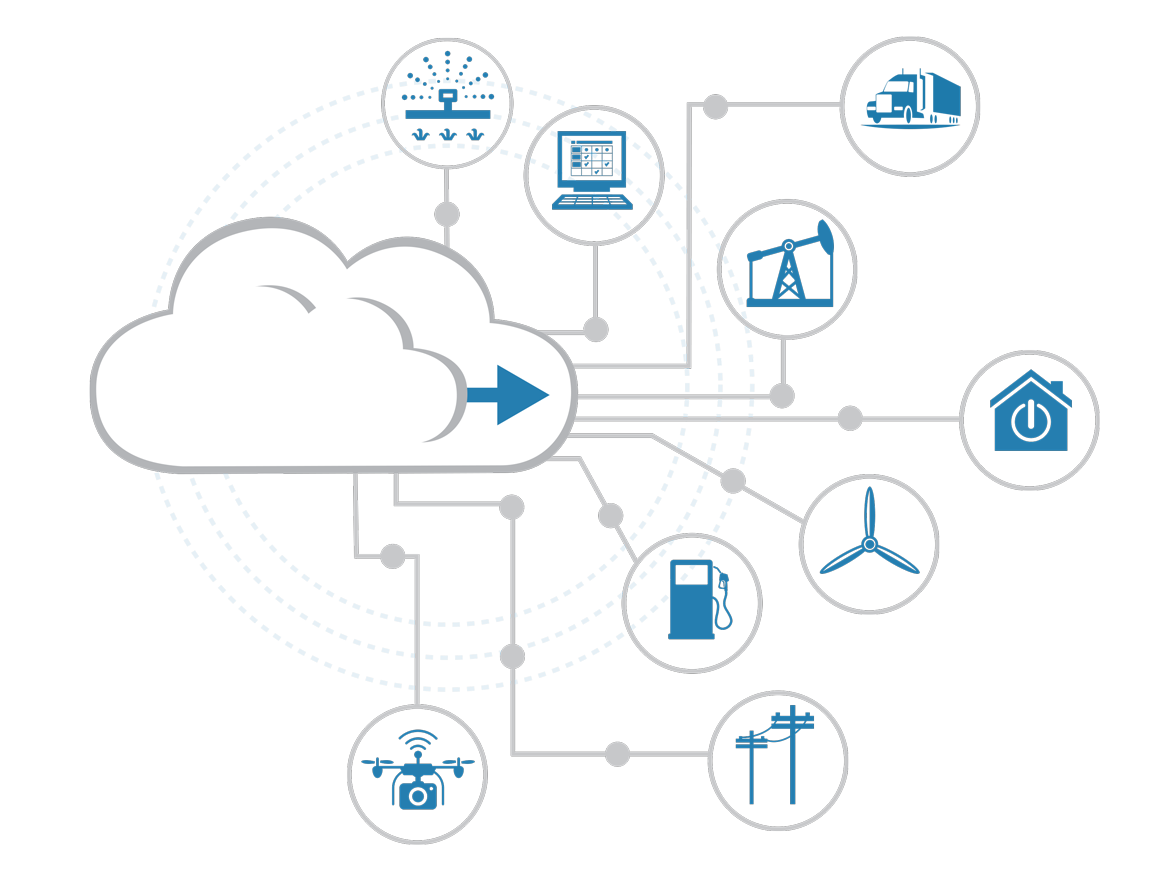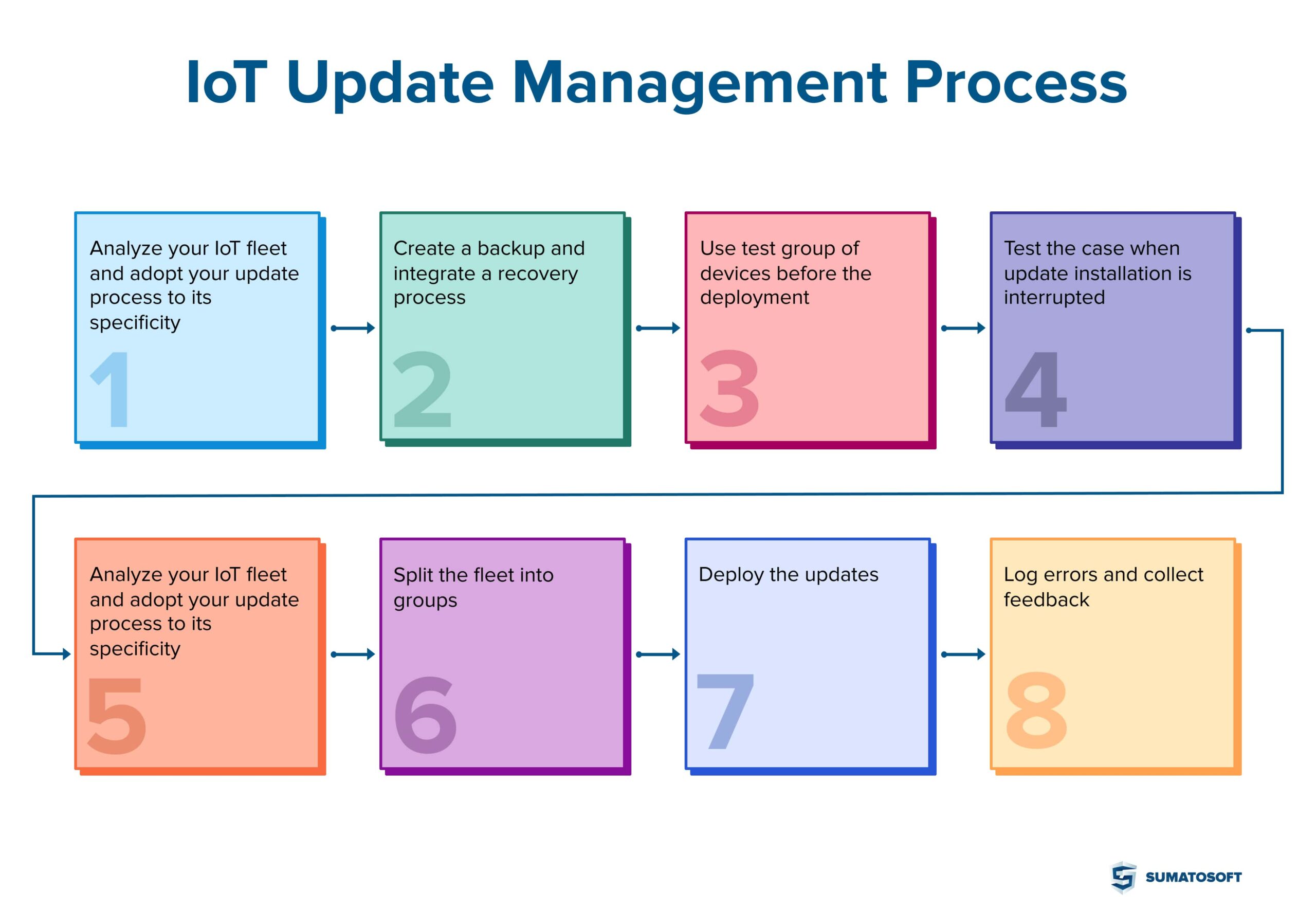Ever wondered how your smart thermostat knows when to adjust the temperature, or how your security camera keeps getting smarter? The secret lies in the often-invisible process of software maintenance and updates, a critical element in the seamless operation of Internet of Things (IoT) devices.
These updates are not merely about adding new features; they are the lifeblood that keeps IoT devices secure, efficient, and relevant. Think of it as preventative medicine for your digital infrastructure. Regular software maintenance, including updates, is an essential task to ensure that IoT devices are running seamlessly. This includes discovering and fixing bugs, those pesky gremlins that can cause everything from minor annoyances to major malfunctions.
The process often involves remotely pushing patches and updates to devices, a feat of engineering that allows for swift responses to emerging threats and evolving user needs. Moreover, it includes supporting users if problems persist, ensuring that the promise of IoT doesn’t fall victim to the frustrations of technical glitches. After all, what good is a smart device if it's not, well, smart enough to fix its own problems – or at least get help when it needs it?
Consider the implications of deploying devices in the field, expecting them to be operational for years. Software bugs and security vulnerabilities are inevitable discoveries. Without a robust update mechanism, these flaws could be exploited, leading to breaches, malfunctions, and a host of other problems. This is where the concept of Over-The-Air (OTA) updates comes into play, a technology that allows for the wireless delivery of software enhancements and fixes.
OTA updates are particularly relevant in the context of AWS IoT Greengrass Core software, enabling seamless updates to edge devices. This capability aligns with the broader functionalities of AWS IoT Device Management, which allows you to securely onboard, organize, monitor, and remotely manage IoT devices at scale. The sheer scale of IoT deployments necessitates such comprehensive management tools, ensuring that devices are not only connected but also consistently maintained.
Devices can be connected to the Bosch IoT Rollouts server, either directly through an optimized interface or indirectly through federated device management. This highlights the interoperability that is becoming increasingly important in the IoT landscape, allowing devices from different manufacturers to communicate and collaborate seamlessly. OTA software updates update binaries, libraries, OS & Docker container, ensuring that every aspect of the device's software is kept up-to-date.
The intricacies of software updates extend to methodologies like A/B image updates with Yocto and RAUC, which provide robust mechanisms for testing and deploying updates. These methods allow for a phased rollout, ensuring that updates are stable and compatible before being deployed to the entire fleet of devices. This is crucial for minimizing the risk of widespread disruptions and ensuring a smooth user experience.
Complementing OTA updates is the concept of remote access, which allows administrators to access edge devices through VPNs, providing a secure channel for troubleshooting and maintenance. Simple SSH login through the web UI offers a streamlined approach to managing devices, simplifying the process for administrators and reducing the learning curve.
As the Internet of Things (IoT) continues to grow, the demand for reliable remote IoT software update solutions has skyrocketed. Businesses are increasingly adopting IoT technologies to streamline operations, gather valuable data, and improve customer experiences. However, the benefits of IoT are contingent on the ability to manage and maintain these devices effectively.
The challenges of remote software updates for the Internet of Things are multifaceted. Consider the diverse range of devices, each with its own unique hardware and software configurations. Developing updates that are compatible across this heterogeneous landscape requires careful planning and rigorous testing. Furthermore, security concerns are paramount, as updates can be a potential entry point for malicious actors.
A remote update for IoT devices can be understood as being able to update a device without being physically there. Whether it's a firmware update, a software fix, or tweaking settings, all of this can now be done remotely. This capability is essential for managing devices that are deployed in remote or inaccessible locations, reducing the need for costly and time-consuming on-site visits.
The process of performing a remote update on a Raspberry Pi, for example, involves several steps, including establishing a secure connection, transferring the update package, and verifying the integrity of the update. This highlights the technical expertise required to manage IoT devices effectively, as well as the need for user-friendly tools that simplify the process.
Remote functionality in IoT has opened up new possibilities for automation, convenience, and efficiency. Imagine a scenario where a fleet of delivery drones can be updated overnight, ensuring that they are equipped with the latest navigation software and security patches. This level of automation is transforming industries and creating new opportunities for innovation.
While an IoT device's ability to receive remote updates has many advantages, it also poses security concerns. Updates can be intercepted or tampered with, potentially compromising the security of the device and the network it's connected to. Therefore, it is crucial to implement robust security measures, such as encryption and authentication, to protect the update process.
Key considerations when designing a remote device update manager include the ability to recover from incomplete or corrupted installations. Updates must have automatic recovery from incomplete or corrupted installations. A failed update should be capable of rolling back to the previous stable version, ensuring that the device remains operational. This resilience is essential for maintaining the reliability of IoT devices in the field.
SocketXP OTA update simplifies remote software updates for IoT and embedded devices. Deploy new features, bug fixes, and security patches seamlessly across your entire device fleet with automation, monitoring, and rollback capabilities. This highlights the importance of having a comprehensive platform that manages the entire update process, from initial deployment to ongoing maintenance.
The keyword "remote" is central to understanding the transformative power of IoT updates. If you have a smartphone or a laptop, you’ve almost certainly authorized an OTA update and enjoyed new software without visiting an Apple or Dell storefront. This convenience and efficiency are now being extended to a wide range of IoT devices, enabling businesses to manage their connected devices more effectively.
OTA updates allow businesses to remotely update the firmware and software of their IoT devices, ensuring they are always running the latest versions with the most recent features and security patches. This is particularly important in industries such as healthcare, where devices must be compliant with the latest regulations and security standards.
IoT update management is the process of managing the IoT fleet by deploying updates to smart devices in order to keep their firmware updated, fix bugs, add new software features, and increase the security level of the entire system. This involves not only the technical aspects of update deployment but also the organizational processes and policies that govern how updates are managed.
Understanding the remote update process for IoT devices is crucial for businesses that are deploying and managing these devices. The remote update process for IoT devices involves several stages, each of which plays a vital role in the seamless deployment of updates.
The remote update process typically begins with a notification to inform users or administrators about the availability of updates. Notification is typically sent through a mobile app, email, or other communication channels. This ensures that users are aware of the updates and can take the necessary steps to install them.
The IoT device management system includes an update manager for firmware and other software running on your devices. The AWS service isn’t limited to monitoring one type of device per account, so you can include shopfloor systems, vehicles, security cameras, and retail equipment in your account. This flexibility is essential for organizations that have a diverse range of IoT devices deployed across different environments.
Device Update works with IoT Plug and Play and can manage any device that supports the required IoT Plug and Play interfaces. For more information, see Device Update for IoT Hub and IoT Plug and Play. This highlights the importance of adhering to industry standards to ensure interoperability and compatibility across different devices and platforms.
The method you choose depends on a variety of factors, including the size and complexity of your IoT deployment, the technical expertise of your staff, and the specific requirements of your devices. Keep firmware and software updated to minimize vulnerabilities and maintain optimal performance.
Regularly update IoT device firmware and associated remote access tools to patch vulnerabilities and improve security. Use logging and session monitoring features to track who accessed what, when, and from where, helping to identify suspicious behavior. This proactive approach to security is essential for protecting IoT devices from cyber threats.
Secure, reliable, and scalable OTA updates for IoT devices are the cornerstone of a robust IoT infrastructure. The growth of IoT devices has increased the demand for remote IoT software updates. Software updates to IoT devices are crucial from a security perspective, but also to keep device firmware up to date with the latest developments.
However, remote updates can be challenging when not properly implemented. What is IoT OTA update management? It’s the comprehensive process of ensuring that IoT devices are always running the latest and most secure software, enabling them to function optimally and securely.
SocketXP is an IoT device management platform that can be used to remotely manage, monitor, access, update and control IoT or any embedded Linux devices at massive scale. This highlights the importance of having a centralized platform for managing IoT devices, providing a single pane of glass for monitoring, updating, and troubleshooting.
Software bugs and security vulnerabilities will be found when deploying devices in the field which should be operational for years. As physical access to devices is often impossible to realize, FOTA is required for each, if not all IoT deployments. Instead, the IoT device connects directly with a remote server, enabling seamless updates and maintenance.


